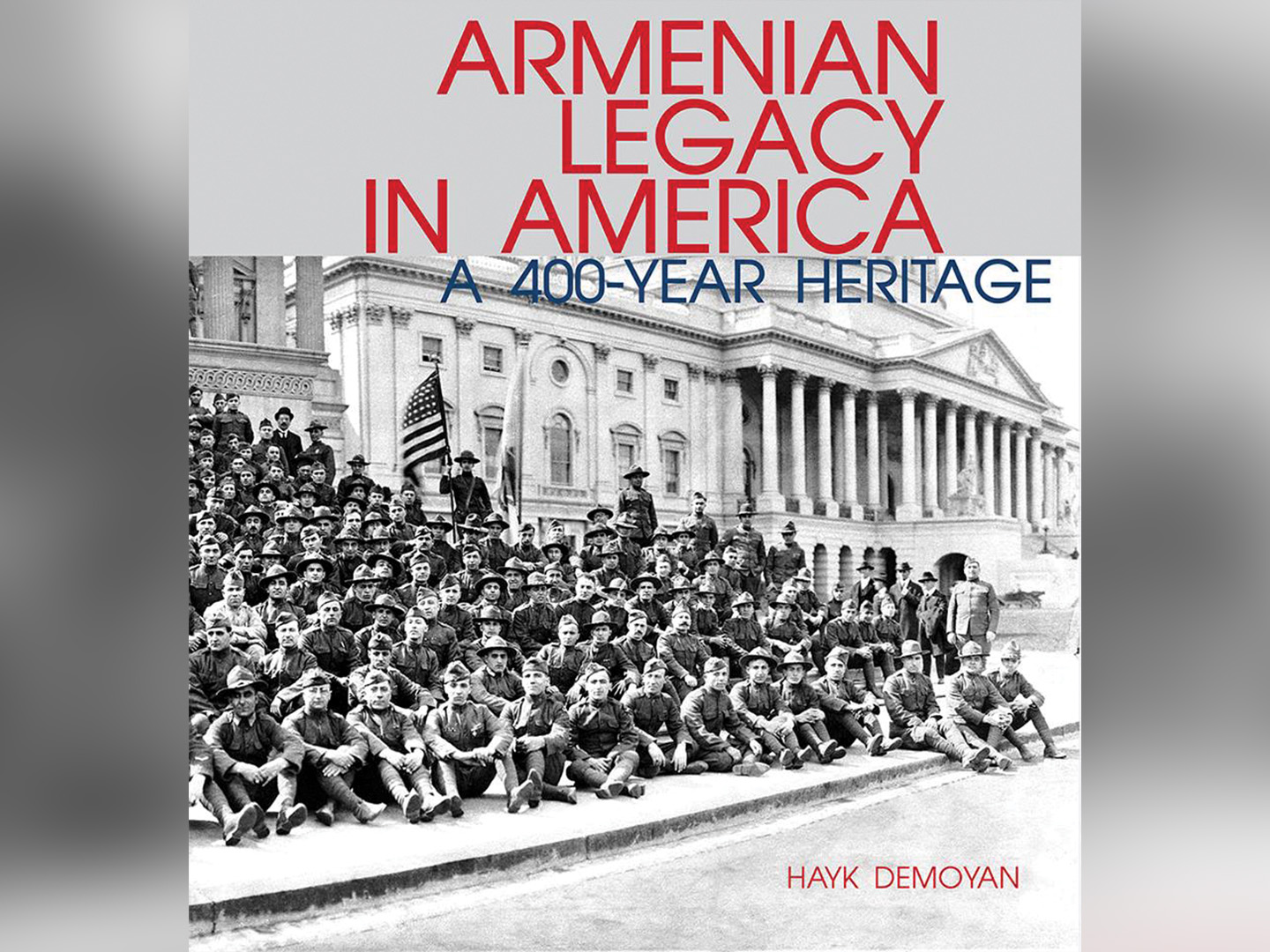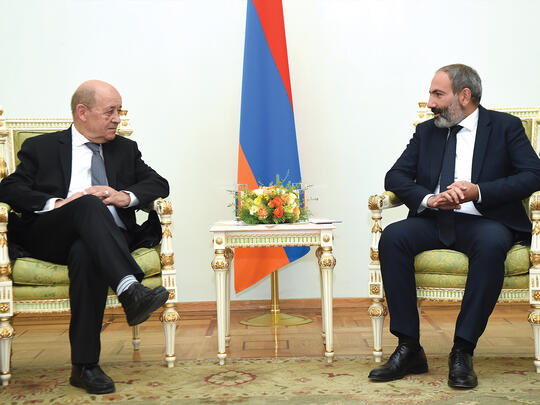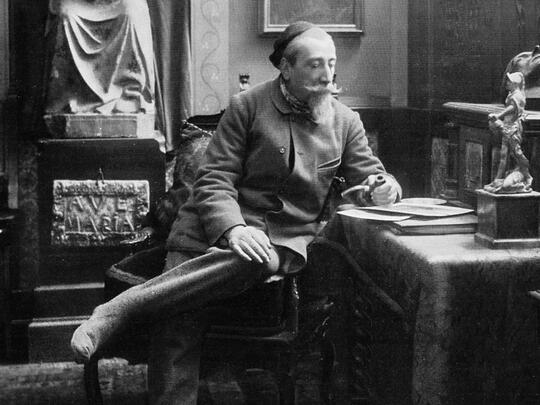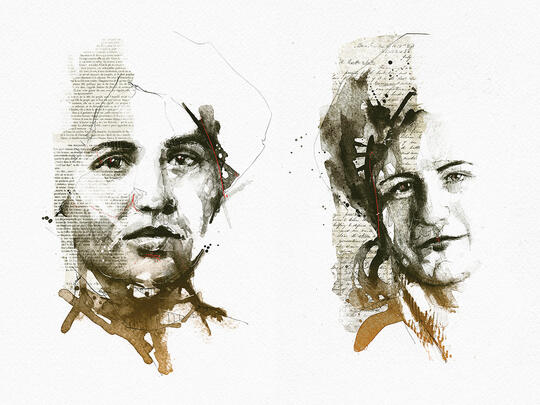At the turn of 20th Century, the plight of Armenians permeated the national consciousness of America, leading to an unprecedented international humanitarian relief effort during and after the Armenian Genocide. Historians in the United States have since viewed Armenians through the prism of those traumatic events, as survivors who immigrated to these shores to rebuild their lives. The roots of the Armenian footprint in America, however, run far deeper, and reveal a fascinating tale of how Armenians contributed to the social fabric of the United States.

This important chapter of Armenian-American history might have been entirely forgotten if not for the curious and astute nature of Hayk Demoyan. The former Director of the Armenian Genocide Museum Institute in Yerevan and visiting Fulbright scholar at Harvard University, Demoyan recognized that 2018 marked the 400th Anniversary of the arrival of ‘Martin the Armenian’, the first recorded Armenian immigrant to land on American soil in Virginia in 1618. During a speaking tour in Boston and Los Angeles however, he was surprised by the reaction to the story of the first known Armenian immigrant. Hardly anyone had heard of ‘Martin the Armenian’, and there was a pronounced lack of awareness of the in the United Sates three centuries before the Genocide. “As Armenians, one of the pillars of how we view our identity is as a Diaspora created by the Genocide. As a historian, I wanted to present the whole picture, that there is much more to our legacy in America and our role in American history.”

So Demoyan set out to fill a gap in cultural knowledge, seeking to help Armenian Americans better understand their own history while educating the broader American public that their Armenian neighbors are not an isolated diasporan community that escaped the Genocide, but part of an earlier American historical narrative of immigrants who helped build the American nation and contribute to its culture.
To appeal to a broader audience however, Demoyan knew a traditional academic text would not serve his purpose. An accomplished author of more than a dozen books, he instead decided on an illustrated history of Armenians in America, a large coffee-table style book, intended to spark conversations and be shared with Armenians and non-Armenian guests alike.

He initially thought he would perhaps have enough material to fill 50 pages, but as he began researching the topic, Demoyan discovered a hidden treasure trove of community history. “It was hugely exciting,” he says, “like working on an archeological dig, every day unearthing more pieces of puzzle that fit together to reveal a panoramic picture.”
With financial support from the Noubar and Anna Afeyan Foundation, which agreed to sponsor this book on behalf of the Aurora Humanitarian Initiative, a year later the puzzle was complete, consisting of more than 2,200 artifacts, rare images and documents, enough to fill 620 pages of an illustrated manuscript entitled Armenian Legacy in America: A 400-Year Heritage.
The book provides the first comprehensive history of the origins and development of the Armenian-American community. As a repository of knowledge, Demoyan hopes libraries, museums and historical associations will add the work to their collections to spur further academic research, but also as an instrument for new generations to help preserve their identity. “I hope it will be an important trigger to make the community stronger.”

Presented in chronological order from 1618 to the early 1990s, much of the contents has never before been published. Through early American maps translated into Armenian, accounts of the first Armenian students of American missionaries who came to United States and remained, the establishment of the first Armenian-owned businesses, and publication of several hundred local Armenian-language newspapers, among other sources and material from both Armenia and America, Demoyan captures the life of early Armenian immigrant communities in the United States.
As more and more immigrants and refugees arrived seeking a better life in America, Demoyan illustrates how Armenian students, traders, farmers, artisans, and many others added their cultural traditions, cuisine, and uniquely Armenian perspective to the American melting pot.
Accompanying the photographs are fascinating stories that pay tribute to the individual zeal and entrepreneurship on the part of Armenians who came to the United States without a dollar in their pocket, but through hard work and determination within a few decades transformed into successful businessmen joining the influential elite of Boston and New York society.
What most struck Demoyan he says, was the extent of early intellectual interaction, as reflected in books about American leaders such as George Washington, Benjamin Franklin and Abraham Lincoln that were translated into Armenian, or letters and poems back to Armenia that depict the United States as a land free of persecution and full of promise. “America was a magnet for Armenian intellectuals, who followed students and American missionaries back home to settle in the United States.”

The illustrated account of Armenian-American history also chronicles the response within the United States to the Armenian Genocide, numerous contributions of Armenians who served in the U.S. military, including the Civil War, Mexican-American War and internationally from WWII onwards, and highlights prominent Armenian-American artists, entrepreneurs, and many others who have helped shape the American mosaic.
Since first being printed by the Tigran Mets Publishing House in Yerevan in early 2018, Armenian Legacy in America: A 400-Year Heritage has been well received in the United States where Demoyan has spent the past few months on a book tour discussing the past four centuries of Armenian presence in America. “This is my mission as a historian to popularize history,” he says, “and when I see the expressions on people’s faces in the audience light up when I talk about the history of their grandparents, in one case, a gentleman recognized his father in a photograph in my book, that is my reward.”
Armenian Legacy in America: A 400-Year Heritage is published by Tigran Metz and is available for purchase online.















